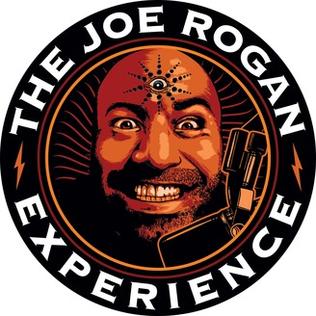Over the past few years, podcasts have grown to become one of the most popular forms on media on the internet. With the simplistic idea of people just talking, podcasts are easy to be enjoyed by anyone. While podcasts typically rely on just audio, some podcasts incorporate video to aid with it's presentation. As someone who is interested in film and video I decided to look more into video podcasts and what goes into making them.
Popular Video Podcasts
Out of all the video podcasts that I have seen, the most popular would have to be The Joe Rogan Experience. The Joe Rogan Experience hosted by Joe Rogan is the perfect example of a standard video podcast. Each episode involves Rogan simply talking with his guest about whatever they feel like for a couple of hours uncut. The video element of The Joe Rogan Experience does not add nor subtract from the podcast overall as it only shows the raw footage of Rogan and his guest speaking. The appeal of The Joe Rogan Experience primarily lies within the idea of listening to solid, well constructed conversation between notable figures for longer than you would normally get on a broadcast talk show. (Link To Image)
The other popular video podcast that I enjoy watching and appreciate the different style of is Cold Ones. Cold Ones is an Australian video podcast cohosted by YouTubers Max Stanley (maxmoefoe) and Chad Roberts (anything4views). The show involves the two hosts interviewing their guests in a typical podcast format, however, Cold Ones differentiates itself by having it's hosts and guests consume alcohol as its gimmick. This creates very interesting scenarios between the hosts and the guests as they adjust to the influence of their drinks. While Cold Ones originally followed a similar format to The Joe Rogan Experience with uncut interviews, it has recently transitioned to having shorter episodes with cuts between large conversations and having more visual elements for context as to what is being talked about. Cold Ones is a podcast for more mature audiences, but is definitely enjoyable to watch in its own special kind of way. (Image Taken From)
How To Make A Video Podcast
Podcasts are known for their simple barrier of entry, only requiring a microphone to record audio. Video podcasts like The Joe Rogan Experience make use of more equipment to have greater production value. Typically, video podcasts have at least one wide camera angle that shows both the host and guest. Close-ups on the host and guest are also commonly used and are cut to while speaking. In most cases, each person is given their own personal microphone to speak into in order to record their audio track for the final recording. Lastly, since the audience is able to watch as the host and guest speak, most video podcasts incorporate some kind of detailed set in order to make the show visually appealing. If you wanted to create your own video podcast, focus primarily on your audio. In the end, you are still making a podcast which is a auditory medium. Once you have a good sounding podcast, you can then move forward with visually making your podcast appealing.
Work Log
- 10/19 - Football Practice Recording (No Project Work)
- 10/20 - Football Practice Recording and script edits
- 10/21 - Found some costume parts and props
- 10/22 - No Project Work
- 10/23 - Confirmed actor was onboard to help with film
- 10/24 - Synced audio and video for choir assessment
- 10/25 - Worked to improve storyboard quality


Comments
Post a Comment